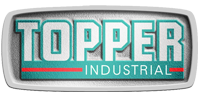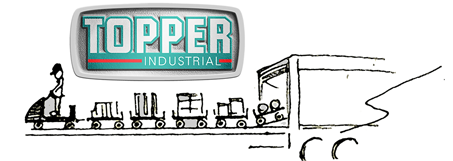Part 1 & Part 2 shared how safety considerations and efficiencies drove Poclain toward a Fork Truck Free environment. James Skyrm, Lean Manufacturing & Continuous Improvement Engineer at Poclain Hydraulics, had his team look at workflow and packaging for every part, and saw many great ergonomic advantages.
One of the most critical components in undertaking a massive change like this is gaining buy in from all parties. Production, Logistics, Maintenance, Quality, Engineering and Health, Safety and Environment (HSE) are all impacted in various ways by implementing a tugger system. Thus Poclain chose to start working with cross functional teams well before equipment was purchased to begin to plant the seed and transition the whole group along the path of thinking differently. “Change is an emotional process,” remarked James. “We use different techniques to help lead the teams across the sometimes confusing and uncertain transition process. For example, with the logistics team we took representatives from all three shifts on an out-of-state tour of a manufacturing facility, which had already implemented tuggers. This helped them to imagine how the new process would work and to see the benefits first-hand, which equipped them to answer questions and concerns from co-workers on their shift. With the production, maintenance and engineering teams we roughed out a scale model of the new cell with tugger carts. This allowed all parties to “feel” what the future cell would be like and to provide feedback and improvement ideas well before the new equipment even arrived.” This pre-work helped to make the implementation rollout easier because people were already excited and willing to buy-in-to the system. Their input and concerns had been heard and addressed from the development process through and after go-live.

James Skyrm, Lean & CI Engineer at Poclain Hydraulics
“There is a strong commitment to Industry 4.0, also known as Smart Factory in North America, to investigate how new technologies can help us improve to better serve our customers. The result has been very, very positive.”
James made a point to thank the guys on the shop floor who were willing to go through this process. “They were the real heroes because they went through six months of change, flipping their world upside down. Without their willingness to embrace change all the while making suggestions and improvements, this wouldn’t have been the success it was.” In the end the company met all project targets. By breaking the entire undertaking down into seven bite-sized kaizen events, each process improvement was tackled one at a time. With a kaizen board posted at Gemba in each area, the team tracked all the issues throughout and following the implementation until the process was stabilized.
James added that the company now has added agility and flexibility with a Topper Industrial tugger system delivering on a sequential route to still be able to change and adjust to meet market conditions. To make it work well required some serious thought, timing, and sequencing.

Information submitted by Jillian Burrow, Marketing Manager for Topper Industrial

